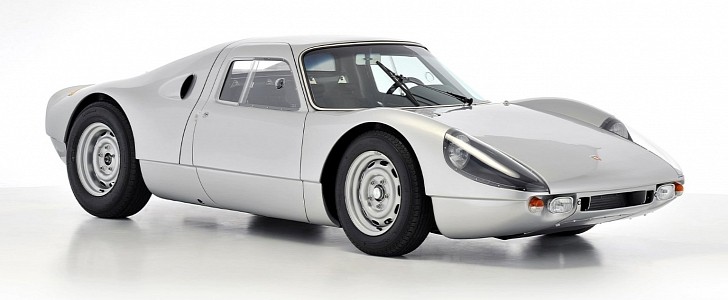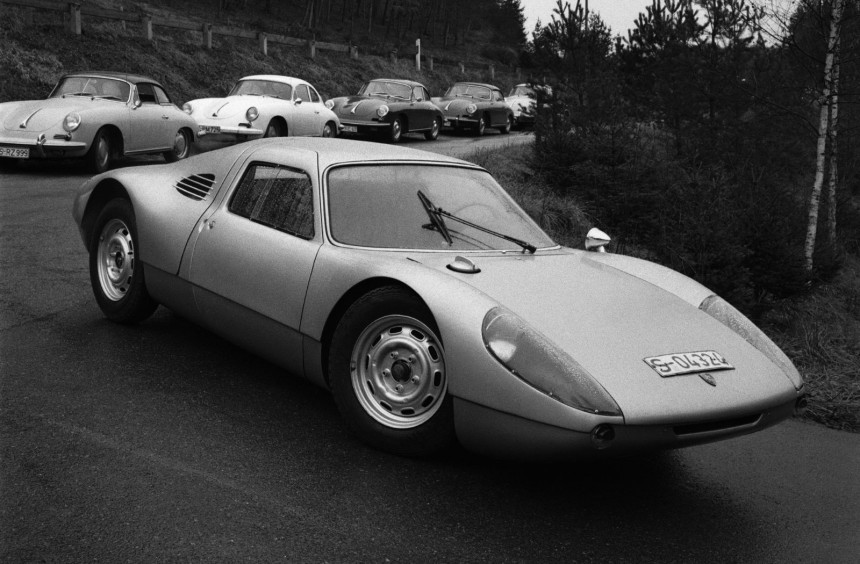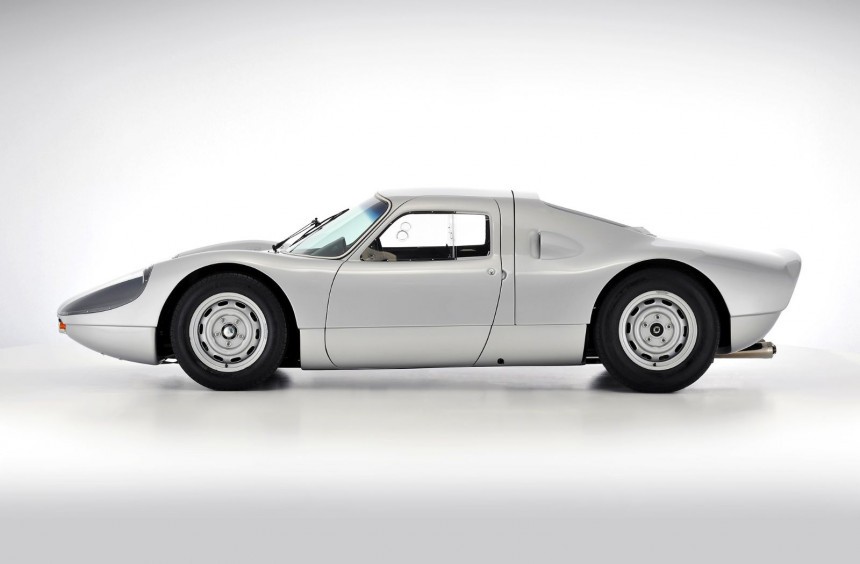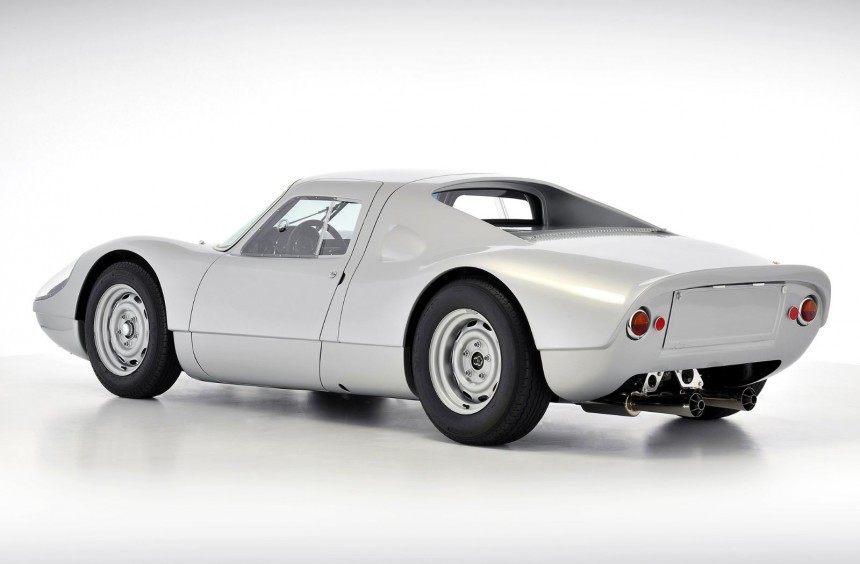Developed for racing alongside the first 911, the Carrera GTS was an innovative sports car that could also be driven on public roads. It proved to be extremely successful and helped solidify Porsche’s place among the era’s best race car manufacturers.
During the early 1960s, the Germans were applying the finishing touches on a brand-new model codenamed 901. When it entered production a year later, it was renamed 911 due to Peugeot’s exclusive rights to car names formed by three numbers with a zero in the middle.
The sports car was created by Ferdinand Alexander “Butzi” Porsche, the son of Ferdinand “Ferry” Porsche and grandson of founder Ferdinand, Sr. Like his siblings, Butzi was a talented designer with a passion for fast vehicles, and aside from the 911, he also devised a mid-engine racer during the same period.
Dubbed 904 but officially known as the Carrera GTS because of the aforementioned naming dispute, the car’s origins can be traced back to 1962. That year, Porsche decided to withdraw from Formula One and focus their motorsport efforts on sports car racing.
Building on the experience gathered with the 550 in the first half of the 1950s as well as the 718 one- and two-seaters that followed, the company began developing a completely new successor. The aim of the 904 project was to compete in the Group 3 class of FIA-sanctioned endurance competitions, so the car needed to be light, and reliable. Furthermore, a minimum of 100 units needed to be built to gain homologation, and according to the rulebook, they all needed to be roadworthy.
While Butzi was working on the 911, as well as a lightweight, aerodynamically efficient body for the 904, a select team of engineers began developing the road-legal racecar’s chassis. Built out of pressed steel sections, the first ladder-type chassis ever built by Porsche featured two sturdy box beams that were tapered into bulkheads at both ends. The suspension system employed components from the 718 Formula One single-seater.
In the front, it featured a double-wishbone configuration while the rear came with bespoke twin arms linked to a couple of longitudinal struts. The brakes were manufactured by German specialists ATE. Rotors were used for all four wheels and cooling was enhanced by an innovative series of ducts.
The Butzi-designed body employed a completely new design language that made the car look completely different from its predecessors. Some argue that its styling influenced a host of legendary sportscars that were born years later like the Alfa Romeo 33 Stradale or even the Ferrari’s mid-engine Dino 206 GT.
It was streamlined in order to deliver optimum aerodynamics, with tests revealing a drag coefficient of only 0.34. To make it as lightweight as possible, Porsche commissioned Heinkel Aircraft Company to help build and assemble the structure. It was comprised of over 50 fiberglass panels, making the Carrera GTS the first in a long line of Porsche race cars that utilized a full fiberglass body.
The chassis was devised to accommodate a series of engines, most notably the new air-cooled, flat-six from the 911. However, the development of the six-cylinder suffered several setbacks, so Hans Mezger and his team of engineers decided to use the proven 2.0-liter, flat-four from the 356 Carrera GTL Abarth. An all-alloy unit with two spark plugs per cylinder, wider mains, aggressive intake cam profiles, and bigger carbs, it was capable of 165 hp and, at the time, it was one of Porsche’s most advanced engines. Metzger didn’t settle for that figure, so he added a larger cooling system and a host of other improvements which increased output to 180 hp. Mated to a five-speed manual and mounted in the middle of the chassis, it propelled the car to 60 mph (97 kph) from a standstill in less than six seconds.
Production commenced in 1964 and ended a year later. Although orders exceeded Porsche’s expectations, the manufacturer went on to build only 106 units. They were available with an optional 210-hp, flat-eight, and several chassis were also fitted with the 911’s flat-six.
With a rigid frame, lightweight body, and an extremely reliable engine, the Carrera GTS proved it was an outstanding racecar right from the start. Apart from the FIA GT championship, it was entered in various competitions across the world, including hill climbs, sprints, and rallies. The car gained numerous class victories in races held on some of the most iconic circuits like Le Mans, Nürburgring, Sebring, Spa, Monza, Watkins Glen, or Zandvoort. The highlight of its racing career was an overall win at the 1964 Targa Florio, where it surpassed much more powerful race cars.
Almost six decades later, it’s still one of the most influential vehicles to don Porsche badges. It marked the beginning of a series of advanced mid-engine, fiberglass-bodied race cars that culminated with the Le Mans-winning 917 prototype.
Most of the GTS chassis were raced for many years, but few of them were only driven on public roads, like the one featured in the Porsche Club of America video you can watch below. Such rare examples have survived to this day and are valued well over the $2.5 million mark. That’s not to say that a GTS with racing history is cheap. In 2020, chassis no 904-061 was sold at an RM Sotheby’s auction for no less than $2.1 million.
The sports car was created by Ferdinand Alexander “Butzi” Porsche, the son of Ferdinand “Ferry” Porsche and grandson of founder Ferdinand, Sr. Like his siblings, Butzi was a talented designer with a passion for fast vehicles, and aside from the 911, he also devised a mid-engine racer during the same period.
Dubbed 904 but officially known as the Carrera GTS because of the aforementioned naming dispute, the car’s origins can be traced back to 1962. That year, Porsche decided to withdraw from Formula One and focus their motorsport efforts on sports car racing.
While Butzi was working on the 911, as well as a lightweight, aerodynamically efficient body for the 904, a select team of engineers began developing the road-legal racecar’s chassis. Built out of pressed steel sections, the first ladder-type chassis ever built by Porsche featured two sturdy box beams that were tapered into bulkheads at both ends. The suspension system employed components from the 718 Formula One single-seater.
In the front, it featured a double-wishbone configuration while the rear came with bespoke twin arms linked to a couple of longitudinal struts. The brakes were manufactured by German specialists ATE. Rotors were used for all four wheels and cooling was enhanced by an innovative series of ducts.
The Butzi-designed body employed a completely new design language that made the car look completely different from its predecessors. Some argue that its styling influenced a host of legendary sportscars that were born years later like the Alfa Romeo 33 Stradale or even the Ferrari’s mid-engine Dino 206 GT.
The chassis was devised to accommodate a series of engines, most notably the new air-cooled, flat-six from the 911. However, the development of the six-cylinder suffered several setbacks, so Hans Mezger and his team of engineers decided to use the proven 2.0-liter, flat-four from the 356 Carrera GTL Abarth. An all-alloy unit with two spark plugs per cylinder, wider mains, aggressive intake cam profiles, and bigger carbs, it was capable of 165 hp and, at the time, it was one of Porsche’s most advanced engines. Metzger didn’t settle for that figure, so he added a larger cooling system and a host of other improvements which increased output to 180 hp. Mated to a five-speed manual and mounted in the middle of the chassis, it propelled the car to 60 mph (97 kph) from a standstill in less than six seconds.
Production commenced in 1964 and ended a year later. Although orders exceeded Porsche’s expectations, the manufacturer went on to build only 106 units. They were available with an optional 210-hp, flat-eight, and several chassis were also fitted with the 911’s flat-six.
Almost six decades later, it’s still one of the most influential vehicles to don Porsche badges. It marked the beginning of a series of advanced mid-engine, fiberglass-bodied race cars that culminated with the Le Mans-winning 917 prototype.
Most of the GTS chassis were raced for many years, but few of them were only driven on public roads, like the one featured in the Porsche Club of America video you can watch below. Such rare examples have survived to this day and are valued well over the $2.5 million mark. That’s not to say that a GTS with racing history is cheap. In 2020, chassis no 904-061 was sold at an RM Sotheby’s auction for no less than $2.1 million.

















